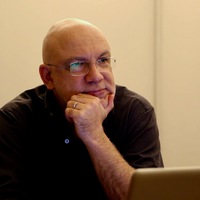Beyond the screen: Institutions, networks and publics of early cinema. Eds. Marta Braun, Charles Keil, Rob King, Paul Moore and Louis Pelletier. New Barnet, Herts.: John LIbbey, 2012., Jun 2012
From the first exhibition yesterday the animatograph drew large crowds of patrons. This is certai... more From the first exhibition yesterday the animatograph drew large crowds of patrons. This is certainly, of the many things worth seeing at Cyclopia, one of the most entertaining. It is more so than the kinetoscope, for it shows the figures life size, and so imparts additional realism to the pictures. The Trilby scene is an excellent one, and so is the boxing match. 1 S o reported the Irish Daily Independent in May 1896 as part of its coverage of the third day of a large charity bazaar called Cyclopia then underway in Dublin, Ireland. Early cinema scholars will be familiar with practically all the elements of this brief review -the early moving-picture devices, the films, the type of venue -but contextual details illuminate the way in which the new entertainment form was adopted in Ireland. Originally known as the theatrograph, the animatograph was the stage name given by the manager of the Alhambra Theatre, Leicester Square, to the moving picture projector developed by British pioneer Robert Paul, when it debuted there in March 1896 for what would be an extended engagement. 2 For the Daily Independent writer, the animatograph represented an improvement over the peepshow kinetoscope on the basis of the increased verisimilitude of its life-sized projected images, but enhancements to the kinetoscope also garnered favourable comments because of their increased realism in reviews of Cyclopia. As well as this, because the writer was familiar with kinetoscopic moving pictures -and assumed his or her readers were also -they could be used as the basis of a comparison in an existing public discourse on moving pictures. 3 One of the films, too, can be identified with some certainty: the Trilby scene is one of the four films shot by Edison personnel in June 1895 that were available to exhibitors in Britain and Ireland through the London office of Maguire and Baucus. 4 These devices and films are elements of an already international trade at the very start of projected moving pictures' novelty year, a period often seen as lasting -in those countries where the projector made its first impact -at least through 1896, and to the end of the 1896-1897 theatrical season. Accepting this chronology, charity bazaars become an important focus for early cinema research at precisely that moment. To the extent that charity bazaars have been discussed in the current literature, their image has been dominated by the disaster of the Paris Bazar de la Charité, which was held almost exactly a year after Cyclopia. On











Uploads
Books by Denis Condon
Papers by Denis Condon
This paper examining Boer-based war entertainments in Dublin largely confirms McCole’s findings, showing the sometimes contentious nature of such shows and how they prompted reflection on the possible ideological uses of new media forms. In the context of competing ideologies, Dublin-based newspapers pointed out the limitations of the new media technologies based on the telegraph and the photograph. Although they are remarkable achievements in themselves, these media could be made to lie, whether inadvertently, to increase their entertainment value, or to suit the ideological position of the user.
It will discuss a number of series of films, including the Warwick Trading Company’s 1901 With the Bioscope Through Ireland series; Beautiful Erin, released by Charles Urban in 1907; and the films shot in Ireland by Robert Paul in 1908. "